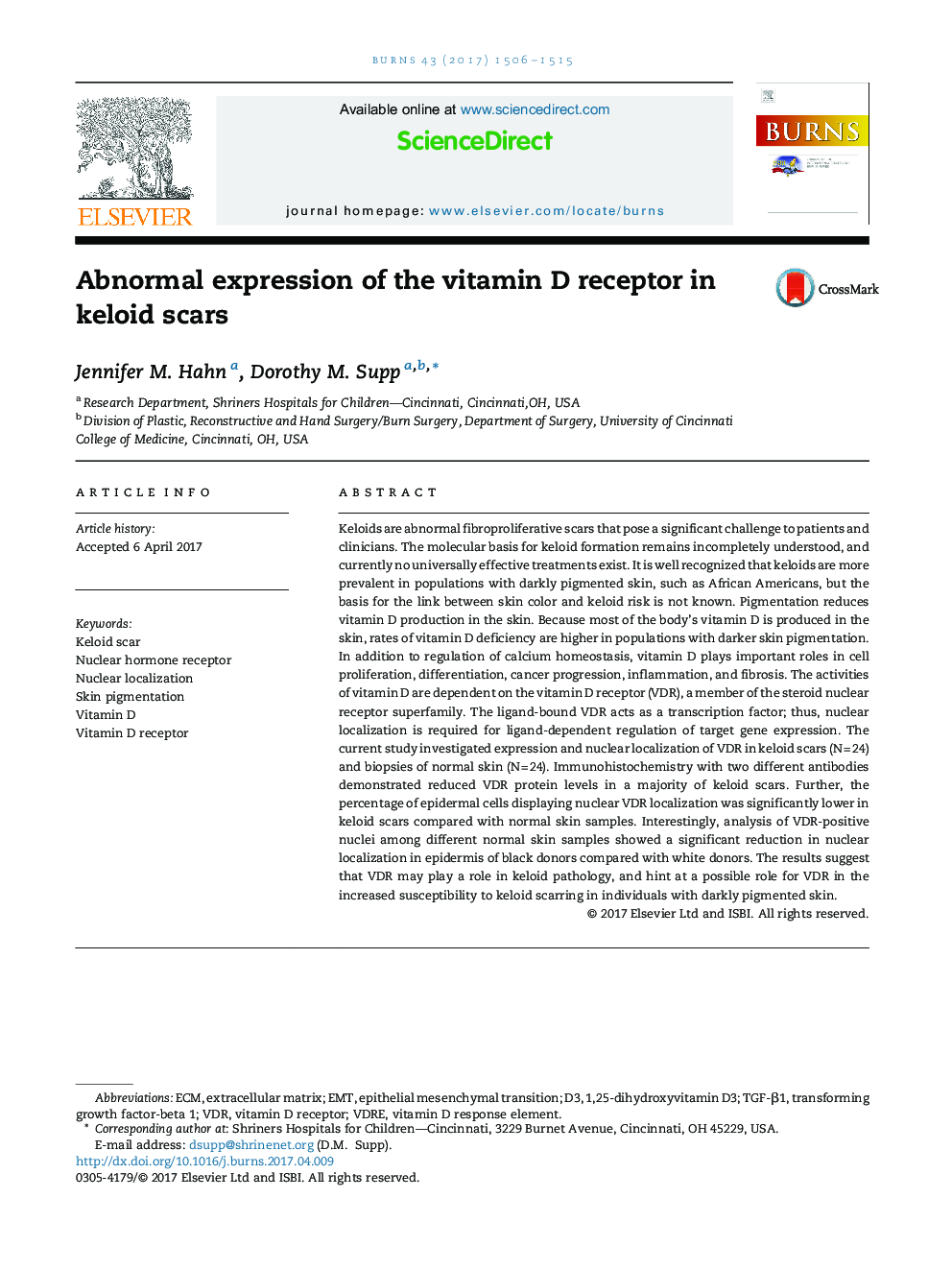| کد مقاله | کد نشریه | سال انتشار | مقاله انگلیسی | نسخه تمام متن |
|---|---|---|---|---|
| 5635955 | 1581729 | 2017 | 10 صفحه PDF | دانلود رایگان |

- Vitamin D receptor (VDR) levels are lower in keloid scar than in normal epidermis.
- Nuclear localization of VDR, which is required for its function, was quantified.
- VDR nuclear localization was significantly reduced in keloid vs. normal epidermis.
- VDR nuclear localization was higher in normal epidermis of white vs. black donors.
- VDR may have a role in keloid scarring and the higher keloid risk in black patients.
Keloids are abnormal fibroproliferative scars that pose a significant challenge to patients and clinicians. The molecular basis for keloid formation remains incompletely understood, and currently no universally effective treatments exist. It is well recognized that keloids are more prevalent in populations with darkly pigmented skin, such as African Americans, but the basis for the link between skin color and keloid risk is not known. Pigmentation reduces vitamin D production in the skin. Because most of the body's vitamin D is produced in the skin, rates of vitamin D deficiency are higher in populations with darker skin pigmentation. In addition to regulation of calcium homeostasis, vitamin D plays important roles in cell proliferation, differentiation, cancer progression, inflammation, and fibrosis. The activities of vitamin D are dependent on the vitamin D receptor (VDR), a member of the steroid nuclear receptor superfamily. The ligand-bound VDR acts as a transcription factor; thus, nuclear localization is required for ligand-dependent regulation of target gene expression. The current study investigated expression and nuclear localization of VDR in keloid scars (NÂ =Â 24) and biopsies of normal skin (NÂ =Â 24). Immunohistochemistry with two different antibodies demonstrated reduced VDR protein levels in a majority of keloid scars. Further, the percentage of epidermal cells displaying nuclear VDR localization was significantly lower in keloid scars compared with normal skin samples. Interestingly, analysis of VDR-positive nuclei among different normal skin samples showed a significant reduction in nuclear localization in epidermis of black donors compared with white donors. The results suggest that VDR may play a role in keloid pathology, and hint at a possible role for VDR in the increased susceptibility to keloid scarring in individuals with darkly pigmented skin.
Journal: Burns - Volume 43, Issue 7, November 2017, Pages 1506-1515